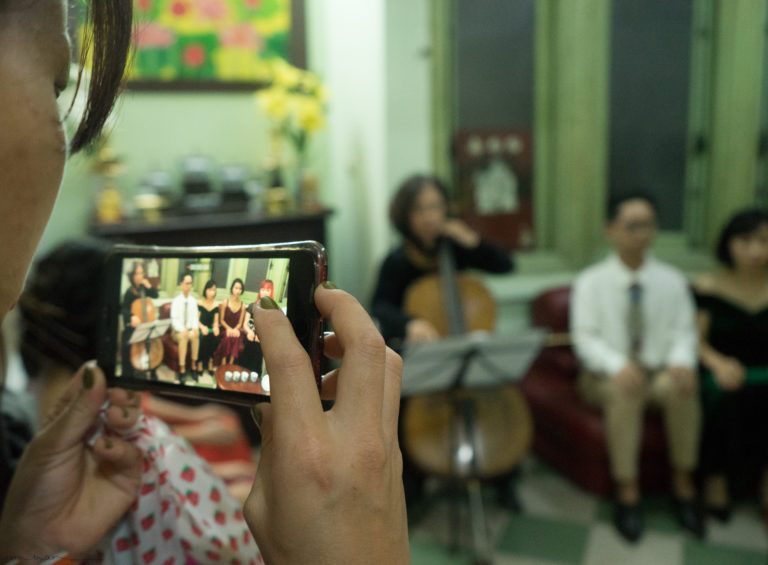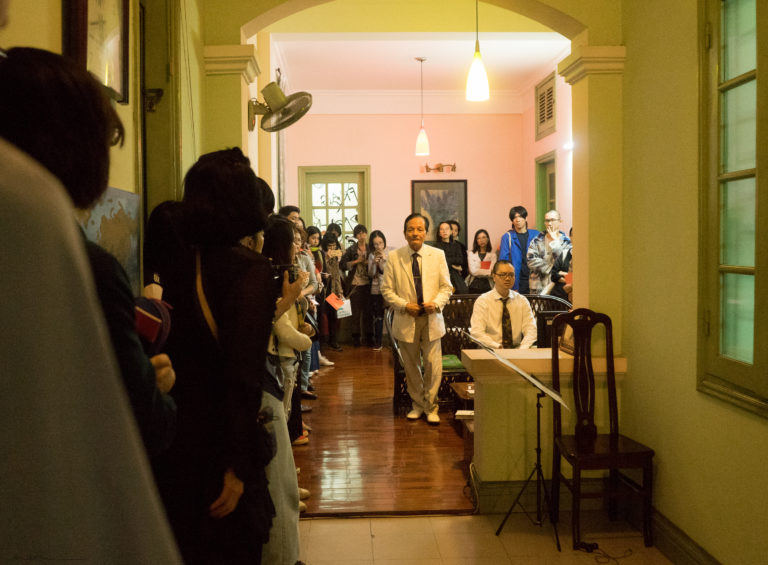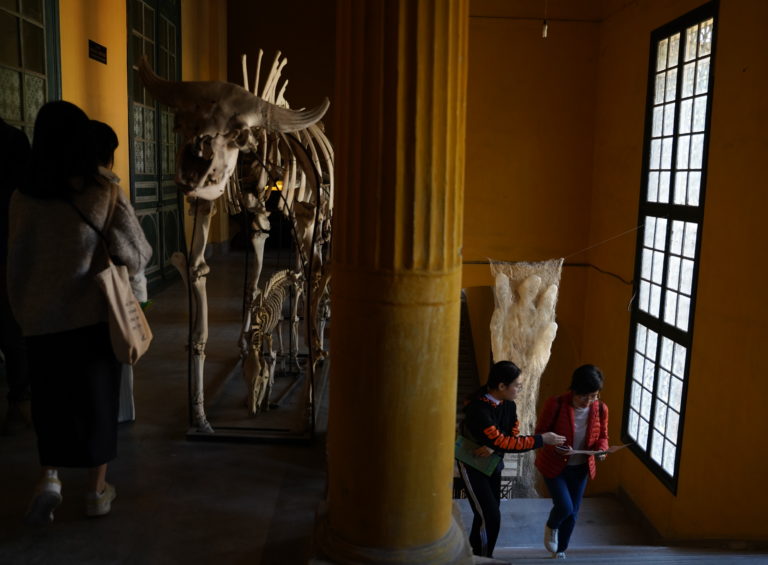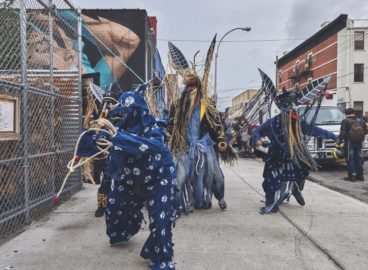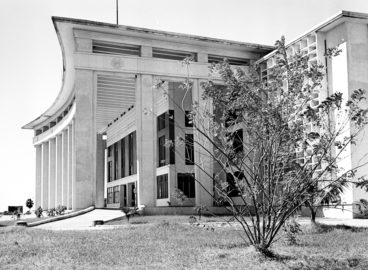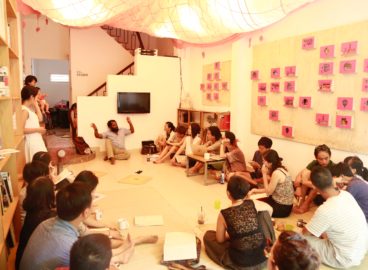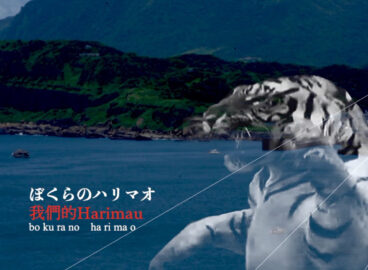Global South collaborations, site specificity, public engagement, cultural mediation, translation, and the politics of the environment—these are but some of the many facets of curator Đỗ Tường Linh’s research and practice. This in-depth interview with Đỗ contributes to ongoing research and discussions about models of cultural work in Southeast Asia.
Wong Binghao: Linh, I feel like this interview is one of many conversations that we have had, and will continue to have, since we first met in 2018 at the TransCuratorial Academy in Phnom Penh, which was co-organized by KfW Stiftung and Sa Sa Art Projects. Many of the artists and cultural workers—from Vietnam and elsewhere—who you have kindly introduced to me since then know you fondly by the nickname “Nokia,” because you are so good at connecting people! I think we both appreciate the value of meeting and learning from fellow cultural practitioners through international residencies, travel, exchange programs, and the like. How important is the international encounter or network to your practice? What has this mode of engagement enabled or facilitated for you?
Đỗ Tường Linh: Thank you so much for thinking of me this way, with that cute nickname. Though I hope that my wish to exchange ideas and inspirations with others doesn’t just touch on the surface of things but continues to enable me to grow and connect on a deeper level.
Having grown up in post–Đổi Mới Vietnam in the 1990s, I am part of the first generation of Vietnamese creatives to realize the importance of the access afforded by the Internet and social media. For example, my first foray into Hanoi’s art world was when I wrote a personal art blog in 2005. Some local artists read my blog and invited me to art events around the city. During this period, my most memorable experiences were at Hanoi Campus, a short-lived residency space founded by two American businessmen, Eric Berg and Bernard Wang, in 2006. The curator of Hanoi Campus at that time, Marcus Mitchell, was one of the first curators I met and befriended.
International artists were invited to be in residence at Hanoi Campus for at least three months. The space also attracted many local artists and audiences. Knowing that most local artists did not speak English, which made intercultural communication and collaboration difficult, I volunteered to help out by mediating conversations between artist and curator, translating, and making relevant connections between contexts. Since then, I have organized and co-organized hundreds of talks, events, workshops, seminars, meetings, and cultural exchanges, as well as assisted foreign curators when they were doing research in Vietnam. This has helped to shape my understanding of a bigger global art world, and the dynamics and politics within the local scenes that might be tailored to a certain taste.

The mid-2000s was a blooming period of international art and cultural projects in Vietnam. I feel extremely privileged to have experienced events like Saigon Open City [2006], Ho Chi Minh City’s first art biennial, and the Flying Circus Project [2007]. Later, in 2009, I participated in my first international residency in Beijing as part of the Ho Chi Minh Trail Project [2009].
From 2005 to 2015, I worked for commercial galleries, private art foundations, alternative art spaces, foreign cultural institutions, and NGOs. This diverse experience gave me a broad and solid understanding of contemporary art and the sociocultural landscape of Southeast Asia. In September 2015, I moved to London to study contemporary art and art theory at SOAS [School of Oriental and African Studies], and since then, my network has broadened—not only because of the university’s diverse cultural environment, but also because of my relative access to Europe, Africa, the Middle East, and the United States.
I feel blessed to work in this field and with so many other creative and intellectual individuals around the world who share my curiosity and desire to learn and connect with others. Just like how we met in 2018 and kept the conversation going—there is a mutual support and exchange between me and the international artists, curators, and scholars I have met over the years. Even though many of my past projects were executed with little funding or infrastructure, my collaborators and I still managed to work things out because of the invisible bond and solidarity that we have built over the years.
WBH: The connections you’ve facilitated have absolutely been intentional and long lasting! Speaking of connections, in 2015, together with artist and art educator Le Giang, you co-founded Six Space, an educational, dialogic, and collaborative platform. In a recent interview with Quynh Pham, Assistant Professor in the International Studies Department at the University of San Francisco, you describe Six Space as a “communal house with alternating hosts, where ideas are being cooked up without being rushed into a finished product.”1“A conversation on art, epistemic violence, and refusal: Quỳnh N. Pham and Tường Linh Đỗ,” International Feminist Journal of Politics 21, no. 3 (2019): 499–511. You and Giang adapt to project demands and extant circumstances rather than blindly conform to “standards” of display and exhibition. I appreciate the confidence it takes to refine an ethos in this manner. Recently, Six Space organized The Bolero Effect [2019], a live art performance of theater, music, and movement, at a private house in the center of Hanoi, and Citizen Earth [2020], an exhibition at the University of Science in Hanoi. Could you share more about these projects, and what drew you to work site specifically in the context of Hanoi?
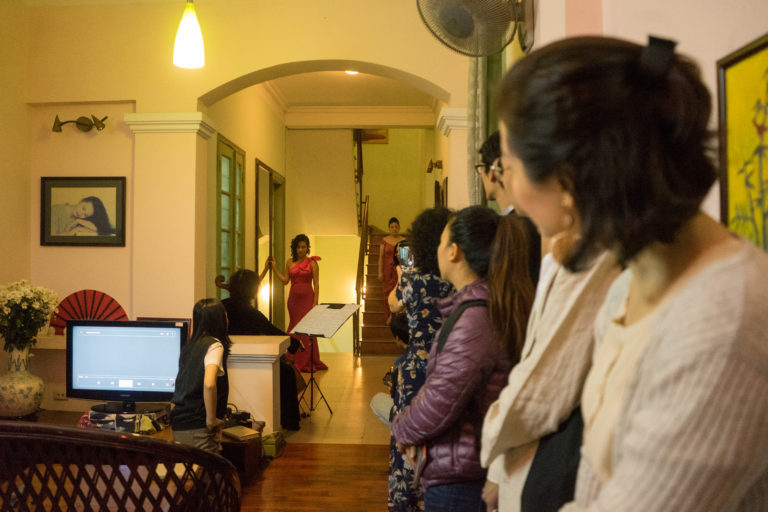
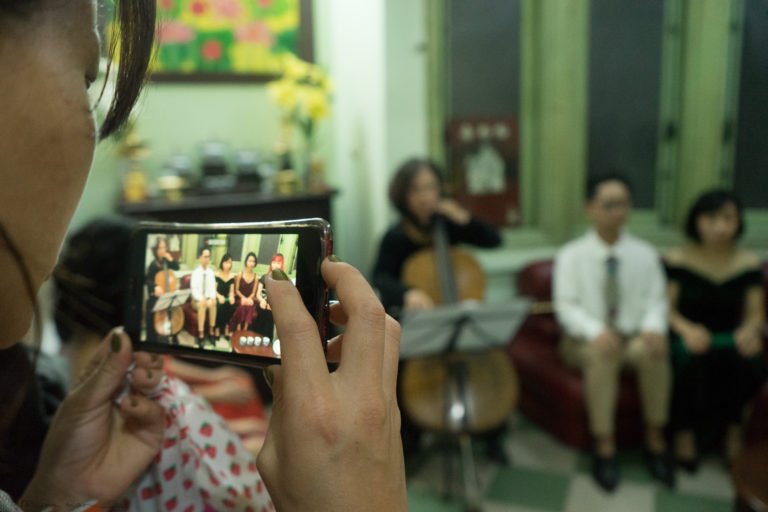
DTL: Although Six Space has had a physical space since 2015, we don’t want to just mount exhibitions. In the past, we noticed that people would come to the shows and leave without much emotional or intellectual engagement. We feel that exhibitions are most effective when they are accompanied by public engagement programs, and so we conducted workshops, film screenings, discussions, talks, etc. alongside the exhibitions. By doing this, we hope to reach audiences outside the bubble of contemporary art.
I have always been drawn to site-specific spaces rather than to typical white cubes. I guess I was inspired by my early engagement with the historic Nhà Sàn Studio and Ryllega art gallery, two important avant-garde alternative art spaces in Hanoi that operated from the late 1990s to the 2000s. Being in those spaces taught me that contemporary art has the ability to trigger the social, cultural, and political significance of a site—and hence to facilitate happenings and encounters.
Both of the projects you mention are quite complex and contain nuanced meanings, but I hope I can summarize the main ideas in my response. Conceived by artist Moi Tran, who is of British and Vietnamese-Chinese ancestry, The Bolero Effect was an experimental theater performance that prioritized the notion of community. The performance explored how nhạc vàng [yellow or gold music], or what we now call bolero music, has shaped sociopolitical and public-private relations between Vietnam and its global diaspora. This genre of prewar music was deemed to be melancholic, sentimental, and apolitical, and was thus banned by the Northern communist government during the revolutionary period. After 1975, this style of music continued to have significant cultural influence in the lives of Vietnamese living overseas. Post–Đổi Mới, it experienced a resurgence in Vietnam and was renamed “bolero music.” One of the most important aspects of this project was a performance by Lộc Vàng, who was imprisoned for a decade for being a nhạc vàng singer.
Although Moi Tran and I only had about two and a half months of lead time, we had previously worked together in London and Taipei, and shared a vision, aesthetic, and concept that could be applied to this project. We quickly decided that the project should happen in a public and unconventional space, one not commonly used for art or theater. We chose a private house that was special because of its location near the historic Temple of Literature and Hanoi’s central railway station, and its interior design, which combines French colonial, Eastern European, and Vietnamese influences, reflecting Hanoi’s unique transitional aesthetic. This aesthetic was very important to the artist and project as it alluded to the hybrid identity of Vietnamese diasporas.
We did an open call to cast community performers. Although they were all nonprofessional actors and singers, after more than one month of being together and engaging with a conceptually unfamiliar art piece, they were fully immersed in the performances. I find this transformative aspect of contemporary art very rewarding.
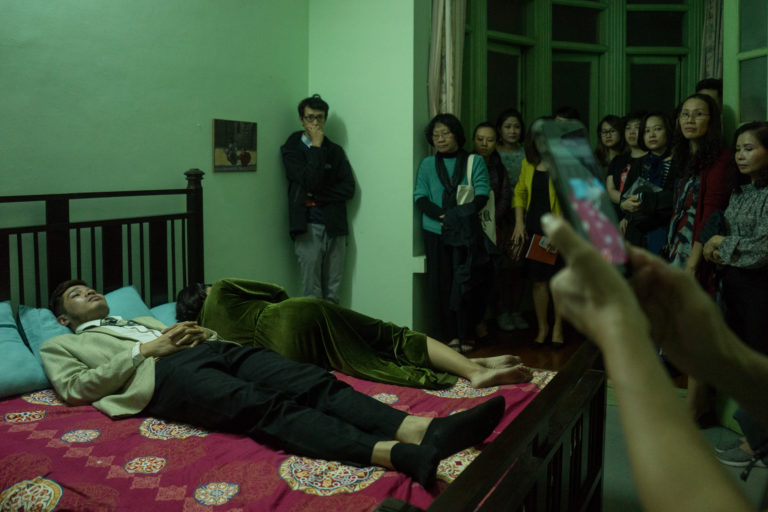
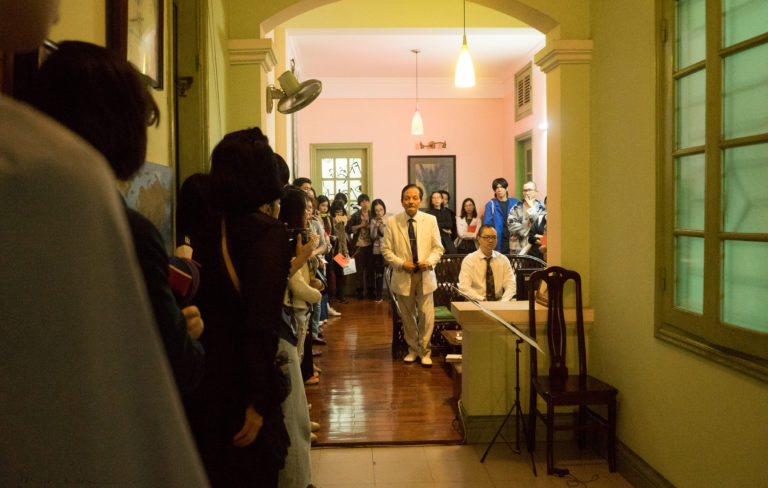
Similarly, with Citizen Earth, I was quick to choose the venue when I first conceptualized and envisioned the project. During the French colonial era, the University of Science was the first university to be established in Indochina. It was called the Université indochinoise, and was the first building to feature the Indochine architectural style invented by French architect Ernest Hébrard. Within the university, there are a small natural history museum and a biology museum with artifacts and taxidermy collected and categorized by the French scientists who first arrived in Vietnam in 1906. Also noteworthy is a huge mural painting by Victor Tardieu, co-founder of the Indochina University of Fine Arts, in the university’s main lecture hall.2See https://catalogue-raisonne-aap.com/en/indochina-school-of-fine-arts/ By situating this project in such a beautiful and historical venue, we hoped to interrogate perceptions and positions within postcolonial environments. We are currently working on a film that documents the process of realizing this project.
WBH: Through exhibitions that you have curated, such as The Foliage 3 [2019]3See “Layers of emotion with ‘The Foliage 3,’” Hanoi Grapevine, posted December 28, 2019, https://hanoigrapevine.com/2019/12/the-layers-of-emotion-with-the-foliage-3/; and Samantha McCabe, “Art and Politics: Reclaiming artistic expression,” Southeast Asia Globe, posted January 13, 2020, https://southeastasiaglobe.com/reclaiming-artistic-expression. at the VCCA [Vincom Center for Contemporary Art] in Hanoi, and No War, No Vietnam [2018] at Galerie Nord / Kunstverein Tiergarten in Berlin, with Veronika Radulovic and Veronika White, you promulgate a critical diversity in terms of who and what can be thought of as “Vietnamese,” and unmoor any monolithic idea of “Vietnam” from reductive stereotypes of war, poverty, corruption, censorship, etc. You are also connected to, and collaborate frequently with, diasporic Vietnamese artists. At this point, I feel it is important to stress that you do not discard a sense of belonging or identity. Rather, you intently engage with the specific context of Vietnam while simultaneously nudging at its borders. How have audiences and peers, either in Vietnam or abroad, reacted to this approach?
DTL: Thank you for your thoughtful observation. I would like to be regarded as a curator from Vietnam who does not feel restricted by the label “Vietnamese curator.” I think this is a struggle shared by many cultural and art practitioners from non-Western contexts. I do hope that my projects are perceived based on their rigorous artistic and intellectual merit rather than my origin. I feel like I have created a balance in my career: For the first ten years, I built trust and collaborations within Vietnam and Asia, and for the past five years, I have broadened my vision to other places—to Europe, Africa, and the Middle East. I have the support of the creative community in Vietnam, who I can always go back to for advice, as well as my wider international network. Because I naturally desire to embrace differences and harmonize opposites, I often feel like a cultural translator between various contexts. There are times when I have been both “inside” and “outside” a cultural milieu. I also deeply value and seek to facilitate grassroots solidarity between the art community and other disciplines, such as science, anthropology, sociology, politics, and business. I don’t mean to romanticize art and cultural labor, as I have had many difficult and conflicting experiences. But above all, it has been a very enriching and meaningful journey.
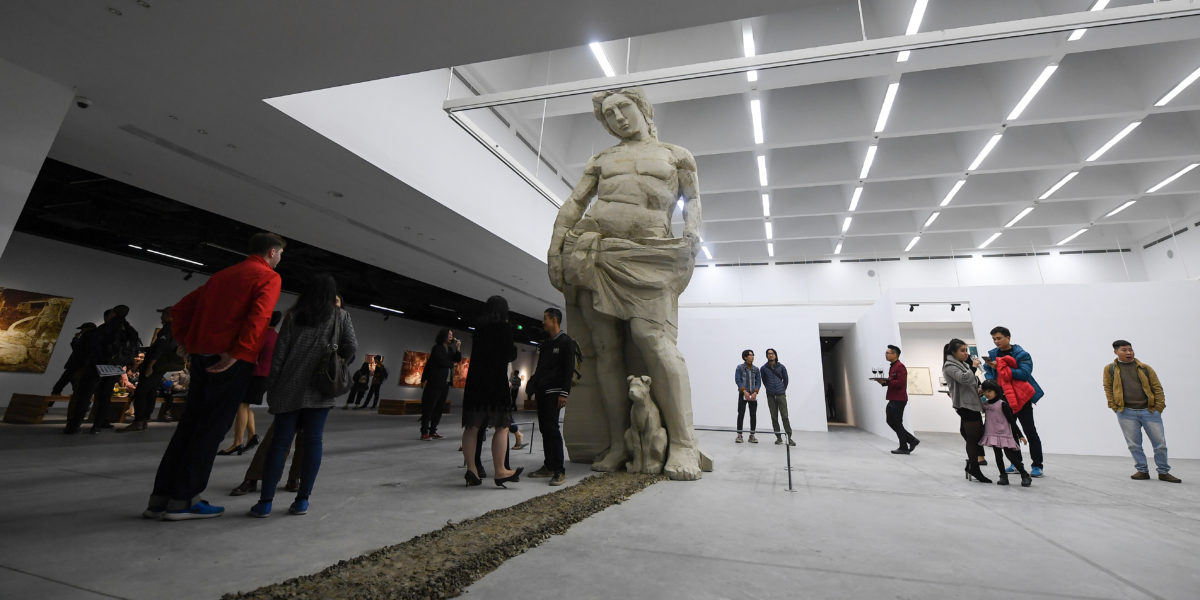
WBH: This methodology of traversal carries over, in my understanding, to your archival and academic research, which you’ve presented at forums such as Tate Modern’s conference Axis of Solidarity: Landmarks, Platforms, Futures [2019]. Could you share more about your research for this or other platforms, and how it might relate to or influence your curatorial practice?
DTL: In my paper titled “Contested Solidarity: Against Amnesia towards past and future,” I examined the historical art and cultural exchanges between Vietnam and Cuba, specifically in relation to a 2016 exhibition staged in Hanoi and titled “A Present Retrospective.” This exhibition introduced works by Cuban artist René Mederos [1933–1996] made between 1969 and 1972 that depict Vietnam. Alongside were works by five Vietnamese contemporary artists—Lê Quý Tông, Phạm Khắc Quang, Nguyễn Nghĩa Cương, Nguyễn Thế Sơn, and Giang Nguyễn—that respond to Mederos’s works. The show was initiated by Mederos’s grandson Marcelo Jerome Brociner and curated by Claire Driscoll at her space in Hanoi called Work Room Four.
Mederos was a prominent Cuban poster artist and graphic designer who was assigned by the Cuban government to travel to Vietnam in the late ’60s and ’70s to paint scenes of the war to show solidarity between the two countries. Besides creating important works, such as Vietnam Shall Win [1972], Soldiers Taking Aim [1969], and portraits of Ho Chi Minh, his works are also featured in TRIcontinental magazine, which was produced by OSPAAAL [Organization of Solidarity of the People of Asia, Africa, & Latin America], a political movement founded in Havana in 1966.
Through this body of research, I wanted to think about ways of “delinking,” in Walter Mignolo’s terms,4https://www.e-ir.info/2017/01/21/interview-walter-mignolopart-2-key-concepts/. See also Walter D. Mignolo, “Delinking: The rhetoric of modernity, the logic of coloniality and the grammar of de-coloniality,” Cultural Studies 21, nos. 2–3 (2007): 449–514. Vietnam’s colonial connections to the empires of China, France, and the United States. Instead, I tried to find connections between Vietnam and Africa, the Middle East, Eastern Europe, South America, and Southeast Asia. Surprisingly, the more I looked, the more I discovered fascinating stories about these “Global South” connections.
My connection with Cuba is quite personal. While studying Spanish at university, I learned that the majority of Vietnamese Spanish speakers studied in Cuba. There were more Vietnamese studying in Cuba than in Spain because of the Global South connection. I finally traveled to Cuba in 2016 and was lucky enough to meet many interesting artists and creatives in Havana. I sympathize with Gerardo Mosquera’s observation that it is much more difficult for curators from the “Global South” to travel to one another’s countries than it is for European curators to travel to other parts of the world.5Gerardo Mosquera, “Some Problems in Transcultural Curating,” in Global Visions: Towards A New Internationalism in the Visual Arts, ed. Jean Fisher (London: Kala Press in association with the Institute of International Visual Arts, 1994). I hope to be back to Cuba one day soon to collaborate with a Cuban curator on some projects.
WBH: You’ve worked closely with a number of senior—some might even say “modern”— artists like Trương Tân, Trần Lương, Nguyễn Minh Phước, Đinh Thị Thắm Poong, and Nguyễn Văn Cường, as well as with younger contemporary artists, some of whom have only recently graduated from schools around the world. What is the difference, for you, between working with these two demographics? What do you learn from them respectively?
DTL: In the context of Vietnam, the older generations share knowledge and experiences through casual meetings or hanging out. It has become a unique culture and trait of the Vietnam University of Fine Arts in Hanoi. Artists and students always hang out at the tea shop around the corner from the school. When I was studying art history there from 2007–11, these intimate conversations and discussions complemented my education in the classroom and challenged my ways of thinking about history, politics, and the arts.
My generation and younger ones are fortunate to be able to travel more easily and we have better access to Western art and educational institutions. This could be considered both an advantage and a disadvantage. For example, those educated in Western institutions might miss out on other ways of thinking and learning, such as the ones I learned through informal and intergenerational conversations at the tea shops. These knowledges cannot be easily captured in a textbook or formal discourse.
It is not always easy for artists of different generations to have a platform for exchange, unless they are born into an artistic family. In my projects, I try to initiate and create these intergenerational exchanges and connections to bridge the gaps.
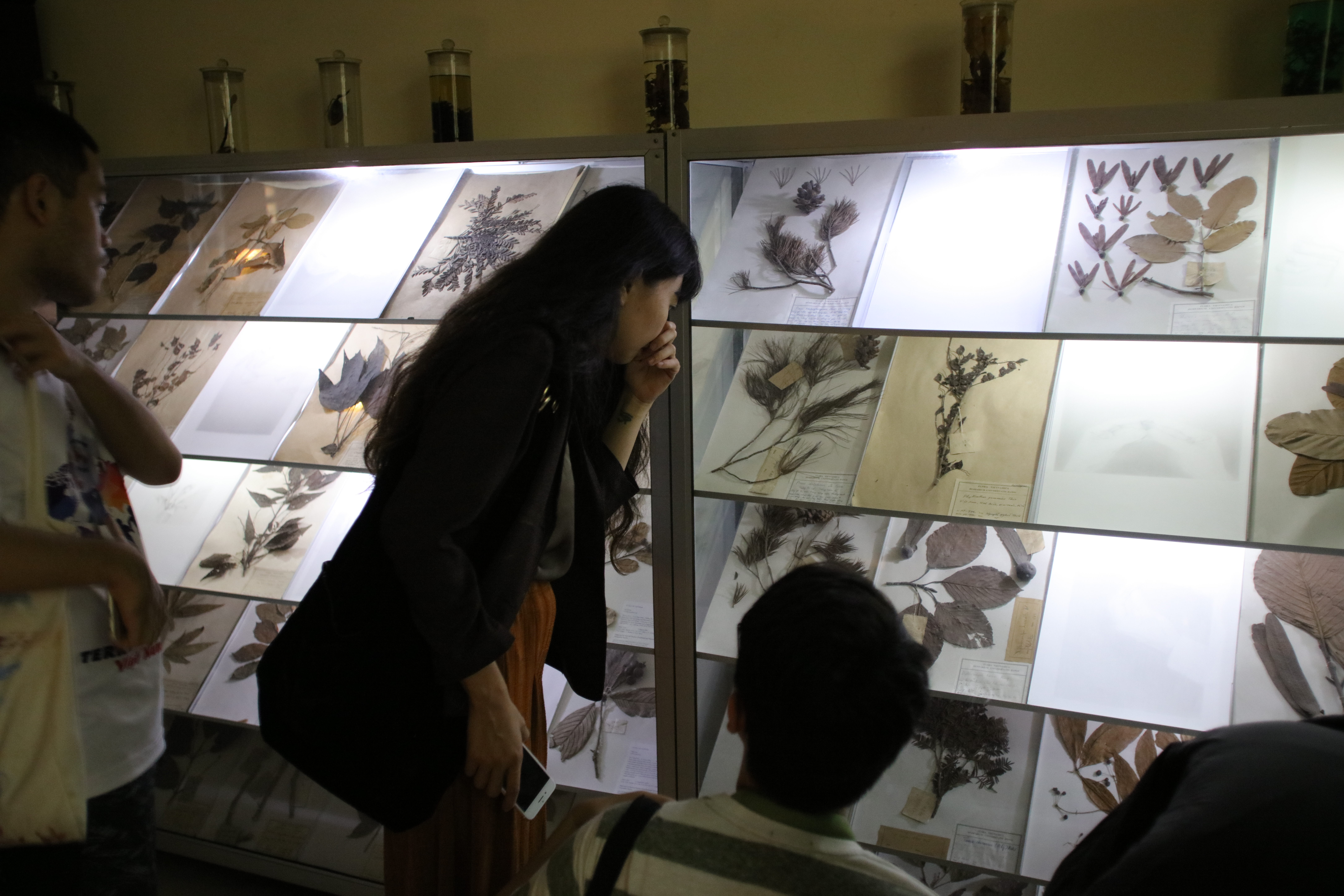
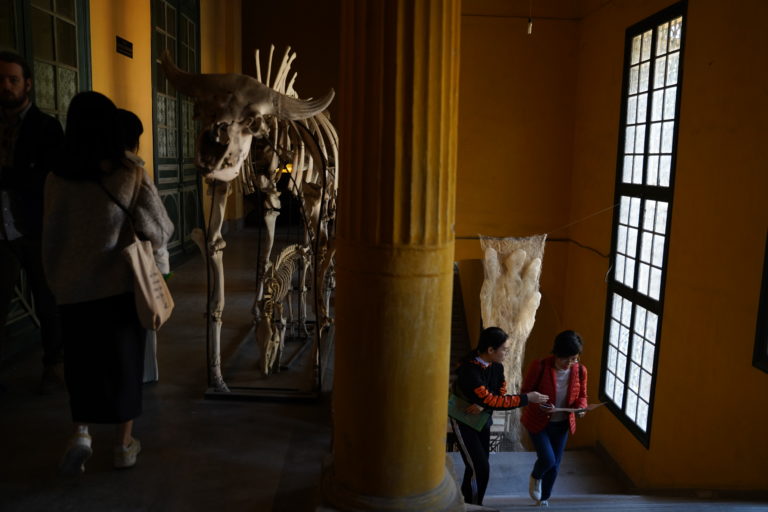
WBH: By way of a “conclusion” to this particular conversation, and after briefly discussing your many varied endeavors, I’d like to invoke more curiosity and discovery: What is a project—or space, collective, artist, etc. —that you feel has not yet gotten the attention it deserves, and why? And a follow-up question: What are you currently working on that our readers can look forward to in the near future?
DTL: I think The Appendix collective, a group of six creatives from different professions, founded in Hanoi in 2010, is doing very important projects both in Vietnam and regionally in Southeast Asia. They curated an exhibition titled Skyline with Flying People 4, in which artworks were displayed inside a storage complex on the outskirts of Hanoi from November 2020 to January 2021. There were twenty-nine exhibiting artists, each of whom presented a single work. Out of these works, nine were site-specific commissions. All visits to this show were by appointment only due to the storage facility’s policy. Information about the show was circulated only through word of mouth. This storage service, advertised as a professional, Westernized archiving system, was only made available in Vietnam about three years ago. As such, I feel that the project prompted reflections on what makes an artwork different, or not, from a consumer good.
I think that The Appendix thinks about and conceptualizes projects in their own way, without referring to any standard system of knowledge. Their ideas might not appeal to the general public or international art world, but maybe that is precisely collective’s intentions: a refusal to be understood or discovered; a desire to remain on the “margins.” I think the project made a very subtle political gesture by refuting the need to overly position or define an artwork. It reminded me of Gabi Ngcobo’s decision not to label artworks in the 10th Berlin Biennale for Contemporary Art in 2018. Art can sometimes be left in obscurity and anonymity.
Currently, like most cultural workers, I am not able to travel internationally due to the pandemic. This is a blessing in disguise as the situation in Vietnam is relatively under control. I took this as an opportunity to revisit artists, meet new artists, and help to develop a few art projects and spaces. For example, I currently serve as curator for Mo Art Space, a brand-new space run by a young team of twenty-something creatives. There has always been a gap between the commercial art galleries and the alternative art spaces in Hanoi. Commercial art galleries are often associated with saleable paintings and sculptures, while experimental art spaces exhibit more “inaccessible” media like installation, performance, and video art. Most collectors of contemporary art in Vietnam are foreigners, and a lot of contemporary art production here is based on international funding. I hope that Mo can nurture a new generation of artists and local collectors. I also hope to develop another discursive art platform like the one that I previously developed for Sàn Art in 2018. I think learning is a crucial resistance tool against aging. I look forward to fruitful collaborations this year with Veronika Radulovic, Kader Attia, Arlette Quỳnh-Anh Trần, Vũ Đức Toàn from The Appendix collective, and a number of young artists. When things are more stable, I hope to be back in London and Berlin to continue projects there. I was also invited by Pascale Obolo to take part in the African Art Book Fair at the Dakar Biennale in 2020, but sadly, it was canceled. I hope to be back on the move again soon.
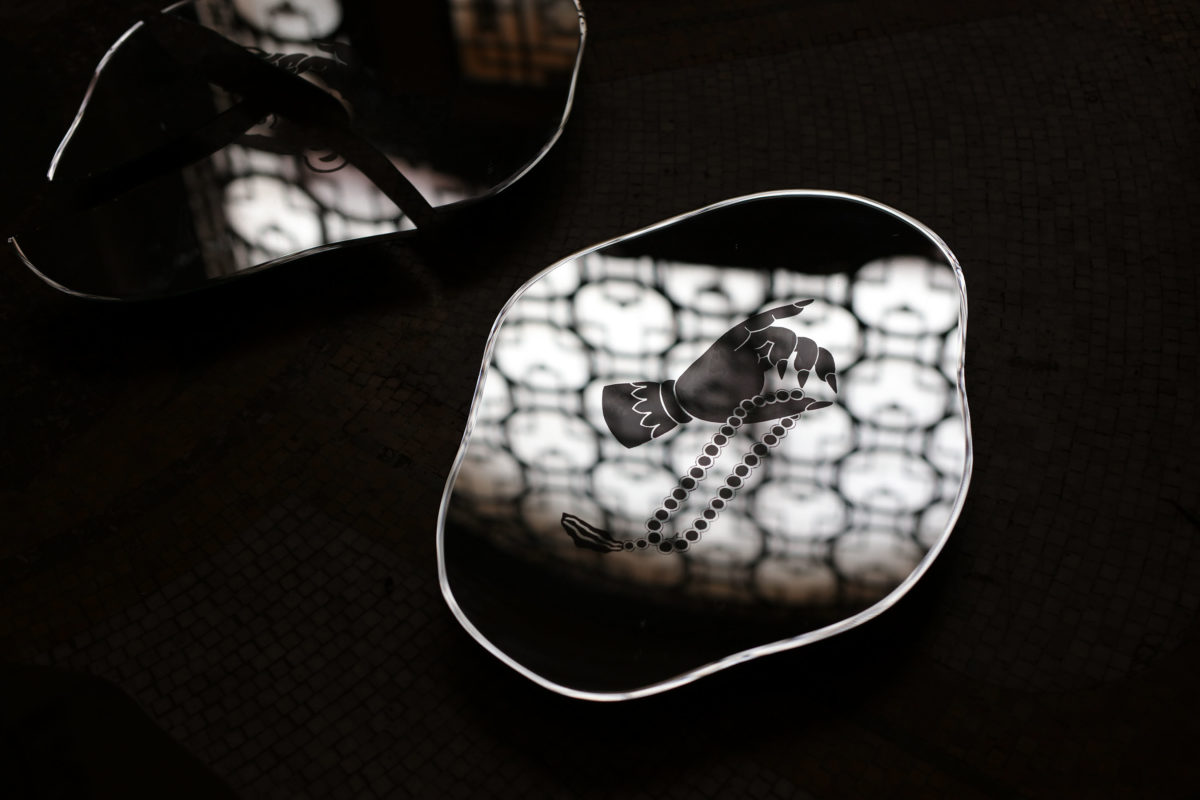
- 1“A conversation on art, epistemic violence, and refusal: Quỳnh N. Pham and Tường Linh Đỗ,” International Feminist Journal of Politics 21, no. 3 (2019): 499–511.
- 2See https://catalogue-raisonne-aap.com/en/indochina-school-of-fine-arts/
- 3See “Layers of emotion with ‘The Foliage 3,’” Hanoi Grapevine, posted December 28, 2019, https://hanoigrapevine.com/2019/12/the-layers-of-emotion-with-the-foliage-3/; and Samantha McCabe, “Art and Politics: Reclaiming artistic expression,” Southeast Asia Globe, posted January 13, 2020, https://southeastasiaglobe.com/reclaiming-artistic-expression.
- 4https://www.e-ir.info/2017/01/21/interview-walter-mignolopart-2-key-concepts/. See also Walter D. Mignolo, “Delinking: The rhetoric of modernity, the logic of coloniality and the grammar of de-coloniality,” Cultural Studies 21, nos. 2–3 (2007): 449–514.
- 5Gerardo Mosquera, “Some Problems in Transcultural Curating,” in Global Visions: Towards A New Internationalism in the Visual Arts, ed. Jean Fisher (London: Kala Press in association with the Institute of International Visual Arts, 1994).
